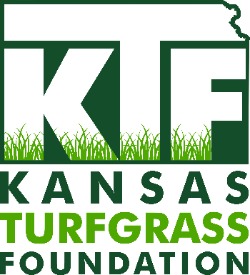Nitrous Oxide Emissions in Turfgrass
 Nitrous oxide (N2O) is an important greenhouse gas that is predicted to contribute significantly to global warming and climate change. Emissions of nitrous oxide typically occur from plant ecosystems that are irrigated and fertilized with nitrogen. Because turfgrass may be fertilized with nitrogen and irrigated, it also may emit significant amounts of nitrous oxide into the atmosphere. Urban sprawl is increasing the area of managed turfgrass in the U.S. and consequently, N2O emissions from turfgrass may contribute to regional and global N2O budgets.
Nitrous oxide (N2O) is an important greenhouse gas that is predicted to contribute significantly to global warming and climate change. Emissions of nitrous oxide typically occur from plant ecosystems that are irrigated and fertilized with nitrogen. Because turfgrass may be fertilized with nitrogen and irrigated, it also may emit significant amounts of nitrous oxide into the atmosphere. Urban sprawl is increasing the area of managed turfgrass in the U.S. and consequently, N2O emissions from turfgrass may contribute to regional and global N2O budgets.
In these studies, emissions of nitrous oxides were measured from various species of turfgrasses under different irrigation and nitrogen fertility management regimes. The primary goals are to quantify the magnitude and patterns of nitrous oxide emissions in turfgrasses and to determine how management practices may be used to reduce those fluxes and mitigate the greenhouse effect. This research is ongoing.
Broader impacts from this study include the potential development of best management practices (BMP) for reducing nitrous oxide fluxes that could be taught to students in turfgrass management and to those employed in the turfgrass industry (in Kansas and elsewhere) through trade articles and conference presentations. These BMPs may result in additional environmental improvements such as reduced water use and nitrogen leaching in turfgrass ecosystems. Data from this study may be scaled up to estimate the amount of nitrous oxide emissions that may occur from a large metropolitan area and to illustrate the impact that urbanization may have on regional and global atmospheric nitrous oxide budgets.
Publications on this topic:
Peer-reviewed:
Bremer, D.J. 2006. Nitrous Oxide Fluxes in Turfgrass: Effects of Nitrogen Fertilization Rates and Types. Journal of Environmental Quality 35:1678-1685.
K-State Turfgrass Research Reports:
Emissions of Nitrous Oxide from Two Warm Season and One Cool Season Turfgrass Species. 2007 K-State Turfgrass Research Report of Progress 981.
Effects of nitrogen fertilizer types and rates and irrigation on nitrous oxide fluxes in turfgrass. 2006 K-State Turfgrass Research Report of Progress 962.
Effects of turfgrass species on nitrous oxide fluxes under typical nitrogen-management regimes. 2006 K-State Turfgrass Research Report of Progress 962.
Diurnal trends in and transient effects of nitrogen fertilization and irrigation on nitrous oxide fluxes in turfgrasses. 2006 K-State Turfgrass Research Report of Progress 962.
Related Magazine and Newsletter Articles:
Turfgrass, Greenhouse Gases, Climate Change, and the Role of Science. Turfnews: The Kansas Turfgrass Foundation Newsletter. January 2011.
Carbon Sequestration in Turfgrass: An Eco-Friendly Benefit of Your Lawn. Turfnews: The Kansas Turfgrass Foundation Newsletter. October 2007.
Laughing turfgrass warms mother earth. Turfnews: The Kansas Turfgrass Foundation Newsletter. October, 2006.
Posters:
Mitigation of nitrous oxide emissions from turfgrasses using controlled-release fertilizers. Jason D. Lewis and Dale J. Bremer. 2007. Presented at the ASA-CSSA-SSSJ meetings in New Orleans, LA, Nov 4-8. Won 2nd place in Graduate Student Competition!



